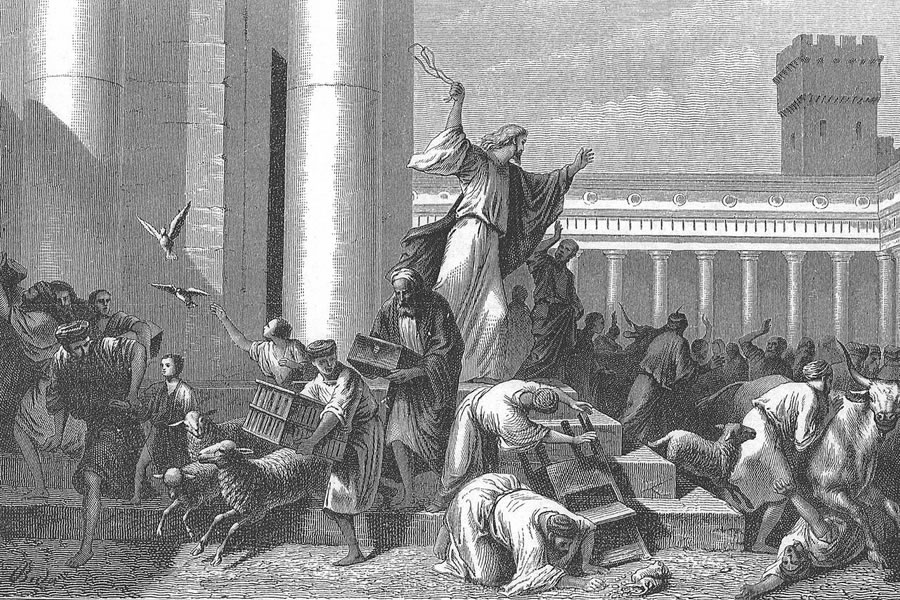
3rd Sunday of Lent
03-03-2024Weekly ReflectionReflection from mycatholic.lifeAll four Gospels speak of Jesus’ cleansing of the Temple. However, there is a difference between the way this event is portrayed in the Synoptic Gospels (Matthew, Mark and Luke) and in the way it is portrayed in John’s Gospel. Jesus was less severe in John’s version of the story, stating only that the moneychangers had turned His Father’s House into a “marketplace.”
In the three Synoptic Gospels, this event takes place at the very end of Jesus’ public ministry, less than a week before Jesus’ death when He returned to Jerusalem for the last time. In those versions, Jesus was more severe, stating that the moneychangers had turned His Father’s House into a “den of thieves” and not just a “marketplace.” In commenting upon the differences between John’s version and the Synoptics, Saint Augustine and Saint Thomas Aquinas believe that they are two different occasions when a similar act of cleansing of the Temple took place. The Jewish Temple, at the time of Jesus’ public ministry, was the place people traveled to each year for Passover to offer the sacrifice of a spotless male lamb in commemoration of the first Passover in Egypt when God set the Jews free from slavery. During this annual celebration, Jewish families who traveled to Jerusalem would purchase a lamb for sacrifice. At the appointed time, they slaughtered the animal in the courtyard of the Temple and then presented it to the priest who gathered some of the blood and sprinkled it on the altar, and then removed the skin, organs and fat to be burned in sacrifice. The meat was returned to the family and roasted on a pomegranate branch so that they could feast on it. Today, we see the Jewish Temple as a symbol and prefiguration of Christ, the New Temple Who is also the priest and the Lamb of Sacrifice. Recall, also, that at Jesus’ death, the veil of the Temple was torn in two, opening it up to the whole world so that all may share in the Sacrifice of the Lamb of God. We are now invited into this Holy of Holies to share in the new life of grace accomplished by His Sacrifice. Since the grace of this Sacrifice of our Lord enters into each and every heart that believes, to cleanse and purify, then every person receiving this grace becomes a new dwelling place of God, a member of His new Temple, the Body of Christ. When Jesus came to the Passover feast and witnessed the buying and selling of these animals in the Temple, He drove them out with much zeal. It was clear that this holy celebration of the Passover had become less of a celebration of faith and more of a marketplace for profit. Jesus’ action is also a symbol of the zeal with which He now seeks to cleanse the temple of your soul. At first, when sin and disorder pervade our souls, our Lord may take the approach of a gentle rebuke, as He did in His first cleansing of the Temple in John’s Gospel. If we persist in our sins, then our Lord will become more zealous in His cleansing as He was in His final attempt to cleanse the Temple the week before He died. Reflect, today, upon this twofold cleansing of the Temple in Jerusalem by our Lord and apply Jesus’ sacred actions today to your own soul. Are there new sins that you have fallen into recently that require a gentle rebuke from our Lord? Are there sins that Jesus has been revealing to you for years now that you obstinately persist in? Allow Him to rebuke you in love and to cleanse you so that His saving Sacrifice as the Lamb of God will indeed purify you, and allow His judgment and wrath to “passover” you this Lent.
BACK TO LIST